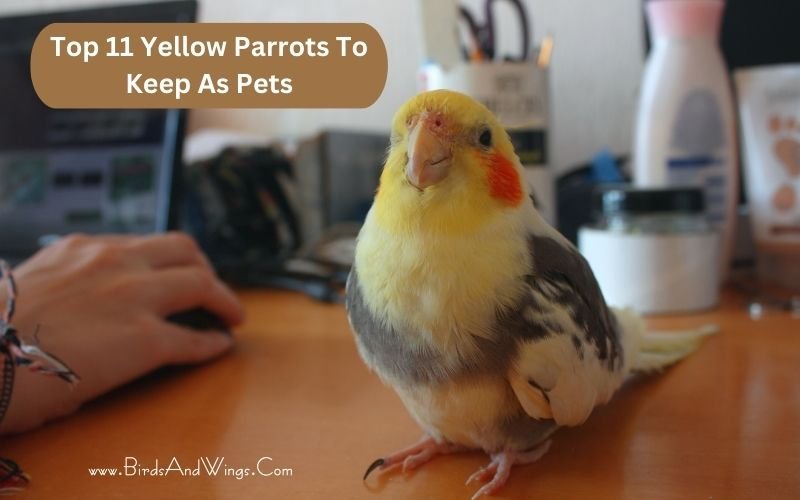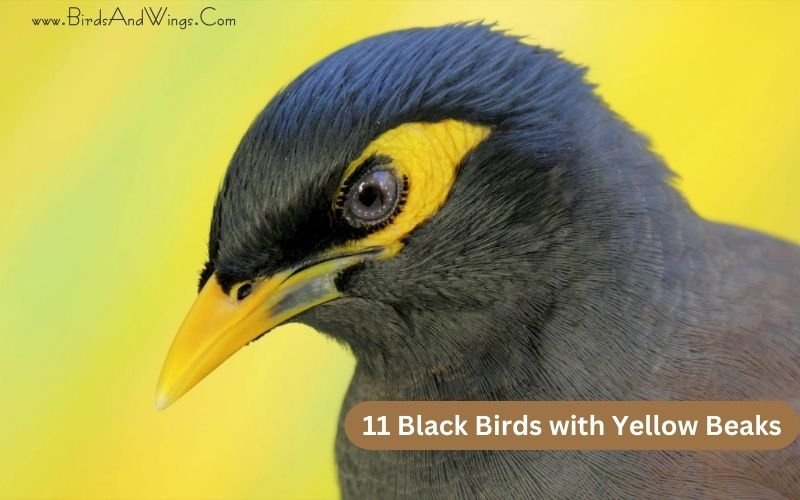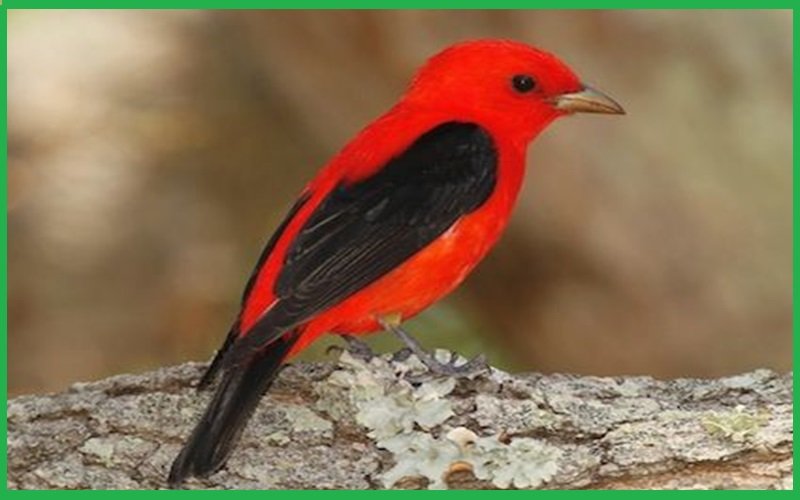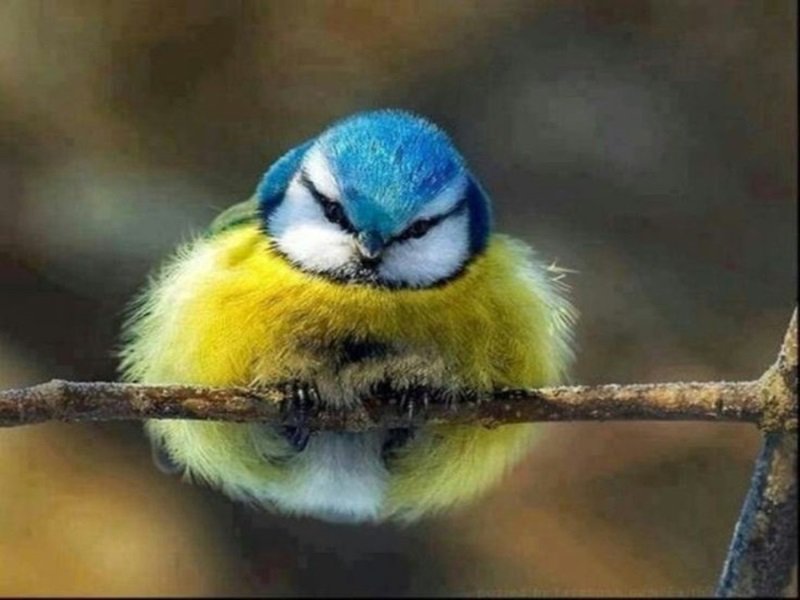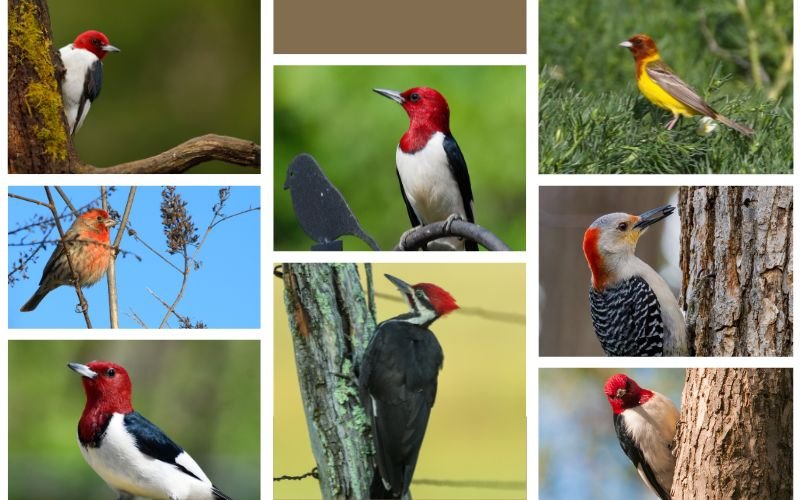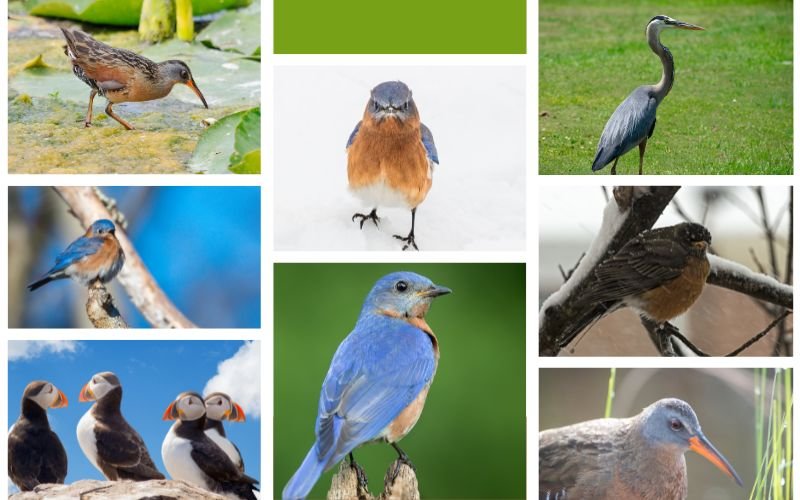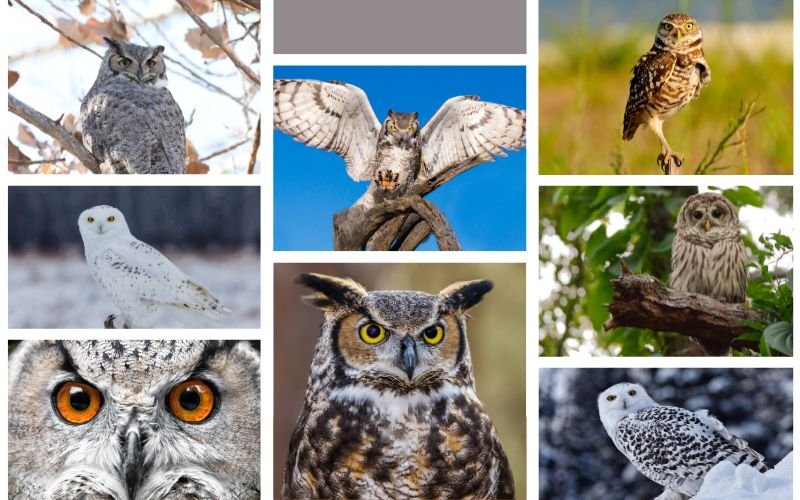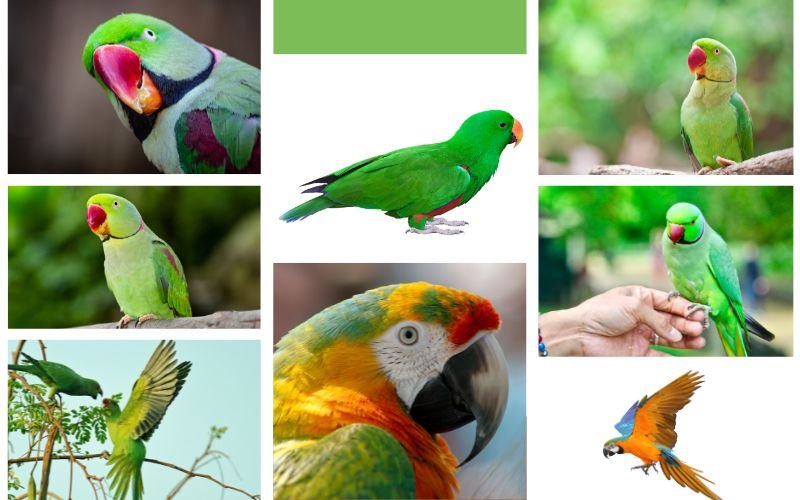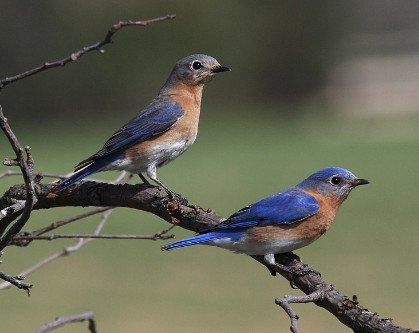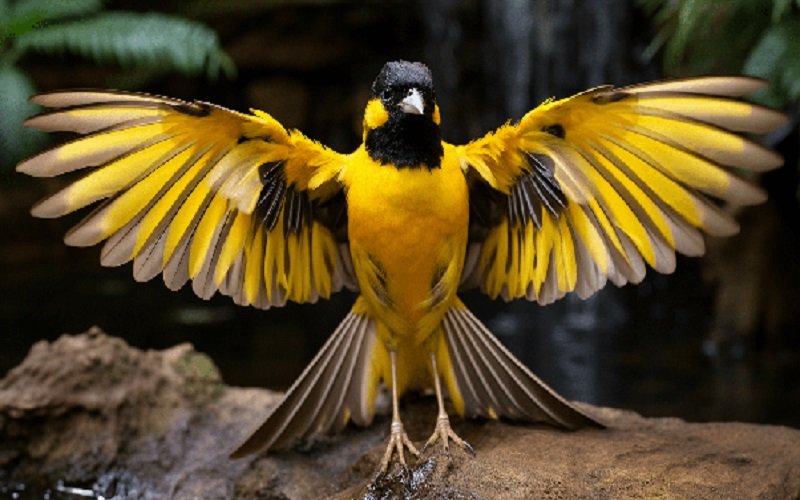Birds can be one of the suitable pets for humans. Parrot has its own recognition for being a pet bird among all the bird species. Parrots’ bird characteristics and intelligence level make them a unique and popular choice as pets for bird enthusiasts.
This article will explore the top 11 yellow Parrots to keep as pets by discussing their scientific names, native places, lifespans, sizes, food diets, etc. So let’s dive into these species’ worlds.
List of 11 yellow parrots to keep as pets
People love to keep animals as their pets. Among all the pet birds, birds are one of the most common species of having pet birds. This section will briefly overview the top 11 yellow parrots along with their scientific names, lifespan, native place, size, and other facts about being a pet bird.
1. Blue-and-yellow macaw
- Scientific name: Ara ararauna
- Lifespan: 30-35 years in wild
- Native to: South American
- Size: 76-86 cm
- Food or Diet: seeds, grains, fruits, berries, nuts, snails, insects
Blue-and-yellow macaw, also regarded as blue-and-gold macaw, is very familiar among bird enthusiasts for being a pet bird. This parrot has yellow breasts and a long tail; its shoulders and wings are blue with a white pattern face. Their beaks and chin area are black.
These parrots are common in South America, including Colombia, Peru, Brazil, Bolivia, Ecuador, and Paraguay. They are fond of rural, forest, woodlands, savanna areas, and urban areas like Rondonopolis in Brazil for their nesting and habitats.
These species mostly choose their partners for life, which means they like to be with one mate for their whole lifespan. Female parrot generally lay two or three eggs in the nests. After that, their incubation period goes for 28 days. Their ability to talk makes them unique pets among other pet animals.
2. Budgerigar
- Scientific name: Melopsittacus undulatus
- Lifespan: 5-8 years in captivity
- Native to: Australia
- Size: 18 cm
- Food or Diet: main food: seeds, along with fruits, nuts, berries, grains
Budgerigar parrots are familiar in Australia and are also regarded as shell parakeets, common parakeets, or budgies. Their body is a combination of green and yellow. They have brown and white stripes on their heads and wings.
These species’ breeding starts between June and September. They made their nests in holes in the trees or on the ground over fence posts or logs. The female lays four to six eggs and incubates for about 21 days. Later chicks start to fly about 30 days after hatching.
They are very social and playful around humans, making them one of the most wanted pet birds among humans. They can imitate, sing songs, mimic sounds, and do simple tricks.
Male budgerigar parrot can learn or acquire from dozens to hundreds of words. Male birds who are kept alone become the best imitator or speakers.
3. Pacific parrotlets
- Scientific name: Forpus coelestis
- Lifespan: 15 to 20 years
- Native to: Western Ecuador and Northeastern Peru
- Size: 11 to 14 cm
- Food or Diet: berries, cactus fruits, seeds, vegetables, and herbs
The Pacific parrotlets are also regarded as lesson’s parrotlet, celestial parrotlet. They are primarily familiar with dry habitats like deserts and forests in Ecuador and Peru. These species of parrots are very protective of their eggs and chicks.
Their incubation period goes for 18 days. They are also very aggressive parrot and are often seen to show their aggressiveness towards other birds. They can even kill other birds or species due to their excessively aggressive maturity.
Thus, they should never be kept with other birds in the cage; they might attack others. This species’ diet contains fruits, vegetables, seeds, brown rice, apples, etc.
They also have the ability to mimic voices; however, their voices could be more precise than other larger birds. Still, they can mimic and produce a few phrases.
4. Sun conure
- Scientific name: Aratinga solstitialis
- Lifespan: up to 30 years (25-30 years)
- Native to: North Eastern South America
- Size: around 30 cm
- Food or Diet: fruits, flowers, berries, blossoms, seeds, nuts and insects
The sun conure medium size parrot is also regarded as the sun parakeet. Their body is covered with yellow and orange plumage with green wing feathers. Their origin is in South America, including North Brazilian, southern Guyana, Suriname, and French Guiana.
They are primarily familiar with tropical areas such as woodlands, coastal areas, and savanna dry lands for their habitats. They like to stay with their flocks. If they get separated from the group, they scream in a high-pitched voice so their fellow members can find them.
They are fond of fruits, flowers, berries, nuts, and insects in the wild. However, in captivity, they are fond of grass seeds, beans, nuts, and fruits like papaya, bananas, oranges, grapes, blackberries, etc, for their food habits. These spices sometimes eat or destroy their eggs if their body has a calcium deficiency.
5. Golden parakeet
- Scientific name: Guaruba guarouba
- Lifespan: around 30 years
- Native to: Amazon Basin of interior Northern Brazil
- Size: 34-36 cm
- Food or Diet: seeds, nuts, flowers berries, and insects
Golden parakeets are also recognized as Golden conure or the queen of Babaria conure. They are medium size parrot with entire body bright yellow and golden plumage. Their wing’s last part has a little bit of green feathers.
They are familiar with Northern Brazil’s Amazon Basin and Amazon River. Their breeding seasons start around November and last till February. They build their nests in high trees.
Mostly their nests are deeper or average-sized. These species are also social and living. They sleep and breed together in the wild. Their diet contains different types of fruits like mango, acai, flowers, buds, seeds, etc., in the wild.
6. Yellow-headed amazon
- Scientific name: Amazona oratrix
- Lifespan:
- Native to: Mexico and Central America
- Size: 38-43 cm
- Food or Diet: around 40 to 60 years
Yellow headed Amazon are also regarded as yellow-headed parrots or double yellow-headed Amazon. Their body is covered with green plumage and the head is yellow with little red and yellow feathers on the upper side of the wings.
They have short tails compared to other parrots. They are familiar in Mexico And Northern Central America. They reside in riparian forest which is filled with scattered trees.
These species are famous for their excellent talking ability, making them a favorite pet for humans or bird enthusiasts. They can even sing and learn the songs with their operatic voices.
7. Cockatiel
- Scientific name: Nymphicus hollandicus
- Lifespan: around 12 to 15 years
- Native to: Australia
- Size: 30 to 33 cm
- Food or Diet: fruits, seeds, wheat, sunflowers, grains, and insects
Cockatiels parrots are also regarded as weero/weiro or birds. They are familiar to Australian inhabitants in wetlands, scrublands, and bushland. They are found in pairs or small groups, or flocks. Their breeding season starts almost in the seasonal rainfall.
These species make their nests in tree hollows beside fresh water. They lay 4 to 8 eggs, and their incubation lasts 17 to 23 days. The Youngs or Chicks start to fly and leave the nests after five weeks.
Although their average life span is around 12 to 15 years, they can survive up to 20 years in captivity with the necessary things. In the recent record, the Oldest living cockatiel parrot is around 36 years old.
9. Senegal parrot
- Scientific name: Poicephalus senegalus
- Lifespan: around 25 to 30 years; captivity 50 years
- Native to: West Africa
- Size: around 23 cm
- Food or Diet: seeds, fruits, flowers, nuts, berries, etc
Senegal parrots are widely distributed in West Africa. Their heads and beaks are comparatively larger than other parrots. Their leader and beaks are gray with a bright yellow Irish. Their back and throat are green plumage, and their breasts are orange.
They are primarily familiar in West African countries. They build their nests in the holes of any trees, mostly in oil palm trees. Female Senegal lay 3 to 4 eggs there. They are also famous for being pet birds among bird enthusiasts.
These species are highly fascinated by its whistling sounds and mimicking voices. However, they are not noisy birds like other parrots. However, wild Senegal parrots cannot be tamed. Because they are wild birds, they are not suitable pets.
10. Burrowing parrot
- Scientific name: Cyanoliseus patagonus
- Lifespan: around 20 years
- Native to: Argentina and Chile
- Size: 23-25 cm
- Food or Diet: seeds, berries, vegetables
The Burrowing parrot is also regarded as a Burrowing parakeet or Patagonian conure. These species are familiar in Argentina and Chile, including southern Uruguay.
Their whole body has olive green and yellow feathers, blue plumage on the wings, and a red belly. Their Irish is white and they prefer dry, open country, grassy shrublands, woodlands, savanna lands, and arid lowlands for their habitats.
Their breeding season starts in September and they lay eggs around December. Burrow birds generally lay two to five eggs. Their incubation period goes for 24 to 25 days.
These days females incubate and male Burrowing provides food for her. They are generally playful birds, gentle, and have affection for humans. They can also adapt to any sounds from the environment and mimic those sounds and voices; this makes them great pets.
11. Sulphur-Crested cockatoo
- Scientific name: Cacatua galerita
- Lifespan: around 20 to 40 years
- Native to: Australia, New Guinea, and Indonesia
- Size: 44 to 55 cm
- Food or Diet: seeds, grains, nuts, flowers, and fruits
Sulphur Crested cockatoo parrots are medium-sized white bodies with yellow crests on their head. They are familiar with Australia, New Guinea, and some parts of Indonesia, including Canberra, Sydney, and Melbourne.
They prefer wooded habitats, suburban habitats, tropical forests, and rainforests for their living. They are also famous as pet birds among humans. They are also brilliant birds as they can open garbage bins for the source of food.
Even in captivity, some birds can continuously dance with musical sounds and do various unique moves. These bird breeding seasons start around August to January.
They build their nests with wood chips in hollow trees. Females lay two to three eggs in the nests and incubate for 25 to 27 days.
FAQ
Are There Any Black Birds with Yellow Beaks That Can Be Kept as Pets?
Are there any black birds with yellow beaks that can be kept as pets? While many birds sport black feathers, black birds with yellow beaks are quite rare. The African Glossy Starling, a sleek and beautiful species, is known for its glossy black plumage and vibrant yellow beak. However, it is important to research their proper care before considering them as pets.
Conclusion
In short, yellow parrots are one the most famous and common parrots among humans and bird enthusiasts. Each species has characteristics and habits that make them unique to their pet owners.
By providing a loving and healthy environment, one can easily tame them and make them their pets. There are also other parrots species with green feathers. They have their characteristics and adaptability. Knowing their characteristics, you can easily create a healthy, affectionate, warm relationship with them as bird owners.

